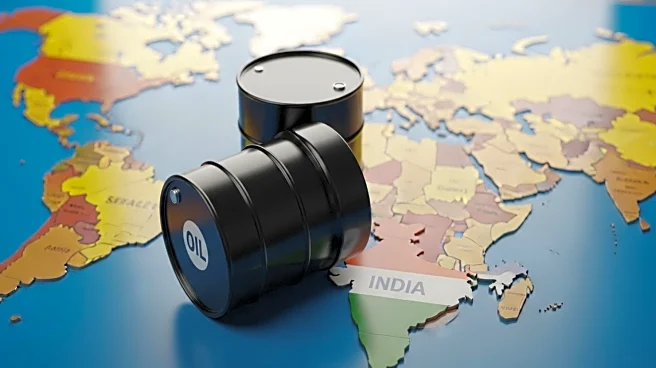What's Happening?
In 2025, global commodity markets have experienced a notable divergence between sugar and coffee futures, driven by differing supply dynamics and speculative trading. Sugar futures have rebounded slightly, with raw sugar prices rising to 19.73 cents per pound, yet the market faces an oversupply crisis due to record production from Brazil, Thailand, and India. This surplus threatens to push prices lower, as technical indicators show sugar futures breaking below key support levels. Speculators have reduced their net long positions significantly, reflecting caution amid oversupply risks and Brazil's high interest rates. Meanwhile, coffee markets present a mixed picture. Arabica futures have declined due to Brazil's record production forecasts, while Robusta prices have increased, supported by tight supply and strong demand from countries like Germany, Italy, and the U.S. Weather-related risks, such as El Niño-driven droughts, add volatility to both markets, influencing speculative strategies.
Why It's Important?
The divergence in sugar and coffee futures highlights the complex interplay of macroeconomic factors and commodity-specific dynamics. For sugar, the oversupply and weak technicals suggest a bearish outlook, impacting producers and traders who may face financial challenges. Coffee markets, however, offer a nuanced scenario where Robusta's resilience provides opportunities for speculators to hedge against supply shocks. This situation underscores the importance of strategic positioning in commodity trading, as speculators can capitalize on these divergent trends. The broader economic slowdown in 2025, characterized by rising trade barriers and policy uncertainty, further complicates demand outlooks, affecting consumer spending and industrial demand. The scenario presents both risks and opportunities for stakeholders in the commodity markets, influencing investment strategies and market behavior.
What's Next?
Speculators are likely to continue aligning their strategies with the divergent trends in sugar and coffee markets. Short positions in sugar may be justified as Brazil's harvest season progresses, while a long bias in Robusta could offer a hedge against macroeconomic headwinds. The ongoing weather risks and production forecasts will play a crucial role in shaping market dynamics, prompting traders to adjust their positions accordingly. Stakeholders in the commodity markets will need to monitor these developments closely, as they could have significant implications for pricing, supply chains, and investment decisions.
Beyond the Headlines
The divergence in sugar and coffee futures may have broader implications for global trade and economic policies. As countries navigate the complexities of commodity cycles, there may be increased focus on sustainable production practices and trade agreements to mitigate volatility. Additionally, the impact of climate-related risks on agricultural outputs could drive innovation in crop management and forecasting technologies, influencing long-term strategies in the commodity sector.












